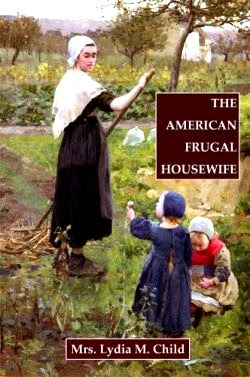 As we start thinking about the coming holiday season it’s the time of year most people will try to
make pie. We’re going to spend some time
on the basics of pie making…no need to buy expensive pies…there are many ways
to make pie baking easier.
As we start thinking about the coming holiday season it’s the time of year most people will try to
make pie. We’re going to spend some time
on the basics of pie making…no need to buy expensive pies…there are many ways
to make pie baking easier.
Myrna and
I are NOT fans of purchased pie crust…and we’ve tried them all over the years –
early mixes, those sticks of pie dough, frozen pie shells and refrigerated ones
too. Last week I priced plain homemade pie crust at 64¢ for 2 crusts, frozen pie
crusts were $2.49 for 2 shallow crusts and $2.79 for 2 deep dish crusts, both
with foil pans, and refrigerated crusts were $2.99 for 2. The purchased crusts all contained
hydrogenated lard plus flour, salt and a number of preservatives. I like lard for my crusts, but I don’t want it
hydrogenated and full of trans-fats. Cooks Illustrated recommended only one pre-made pie crust, a frozen one that came in at $5.99 for 2 crusts!
Here are some hints about making pie crust
yourself.
 Mixing
Pie Dough Cut the fat into the flour in marble size pieces or ½” slices. With a pastry blender, 2 knives used like a
scissors, a fork or your fingertips, rub or cut the fat until the pieces are
the size specified by the recipe.
Mixing
Pie Dough Cut the fat into the flour in marble size pieces or ½” slices. With a pastry blender, 2 knives used like a
scissors, a fork or your fingertips, rub or cut the fat until the pieces are
the size specified by the recipe. Pea size pieces make a flaky crisp pastry. Pieces like bread crumbs or coarse meal makes a tender, more crumbly pastry.
Older recipes (and the way I was taught) often cut in half the fat to coarse meal size and then cut in the remainder to pea size.
When you
add ice water, add only 2/3 of the
amount called for; sprinkle it evenly over the flour-fat mixture, mix quickly
with a fork and try to gather it into a ball.
If it won’t hold together, add more water a teaspoon at a time. Too much water makes it tough.
Cold and
Heat Affect Pastry
·
Have the
fat and water very cold – Myrna even chills her shortening; you definitely want
to chill butter or lard.
·
Chill
dough after mixing – If you have time, chill it in the refrigerator for 30
minutes. It will be easier to handle,
less likely to shrink, and bake up flakier.
·
Use a hot
oven. High heat explodes solid fat
particles, creating steam which lightens the pastry and makes it crisp. At lower temperatures, the fat just softens
and melts, no explosion, no crisping steam.
Roll the
dough away from you from the center to the edge. Give
the dough a quarter turn and roll away from you again. Continue until it is 1/8”-1/4” thick and 2-3” larger than you will use.
Don’t
stretch the dough when placing it in the pan. Ease the dough into the sides and
press it gently so no air is trapped between the dough and pan.
Using Up Pie Crust
Make
crusts for mini muffin or muffin pans from pie-making scraps. Store
in the freezer until you’ve accumulated enough for a pan of mini tarts.
Bake and fill with cooked fillings, or make pecan or pumpkin pie filling or
quiche and bake after filling.
Use a
cookie cutter to cut muffin pan crusts:
-3” for mini
muffin pans and 4 1/4 “ for regular muffin pans
-Store them on a small paper plate with double sheets of waxed paper between the layers; put in a plastic bag, plate and all, and freeze. You may want to freeze them on a cookie sheet first, then stack and store.
-Let them thaw by placing on the back side of the pan; they will shape themselves. If you plan to fill after baking, bake them on the backs of the pan as well.
3 or 4” squares also can be used for filling for little “hand-pies” to be baked - smaller sizes make appetizers.
-Scraps can be cut with decorative cookie cutters and saved for decorating future pies. Overlap the decorative cutouts on top of the pie, leaving some holes, and substitute for lattice crusts.
-Top pie filling in custard cups with small scraps to fit.
-Store them on a small paper plate with double sheets of waxed paper between the layers; put in a plastic bag, plate and all, and freeze. You may want to freeze them on a cookie sheet first, then stack and store.
-Let them thaw by placing on the back side of the pan; they will shape themselves. If you plan to fill after baking, bake them on the backs of the pan as well.
3 or 4” squares also can be used for filling for little “hand-pies” to be baked - smaller sizes make appetizers.
-Scraps can be cut with decorative cookie cutters and saved for decorating future pies. Overlap the decorative cutouts on top of the pie, leaving some holes, and substitute for lattice crusts.
-Top pie filling in custard cups with small scraps to fit.
Pie crust
toppings:
-Brush the
top of your 2 crust pie with a little milk or cream and sprinkle lightly with
sugar and cinnamon or nutmeg if desired.
-You can glaze the 2 crust baked pie thinly with powdered sugar and milk glaze
after it cools a little.

















TY for the hints and suggestions. I always try to make sugar nubs with the extra dough, and I end up burning them. For some reason, never thought of freezing and waiting.
ReplyDeleteI have two recipes I like. One uses butter, and I use a ninja push button mixer which works very nicely! The other is whole wheat. I also have been using white lily soft while flour for my butter recipe, and a little extra to compensate for the soft flour.
Always good to see other tips & hints for pastry. I use an old recipe from a Grand Diplome book. I use half butter & half shortening, which is not chilled, but I do use very cold water & chill the dough for half an hour b/4 rolling out. Just made an Apple Cherry pie yesterday. http://www.cooks.com/rec/doc/prt/0,1937,158160-225202,00.html
ReplyDeleteThanks so much for the great info. Am saving this for my next pie crust. M
ReplyDelete